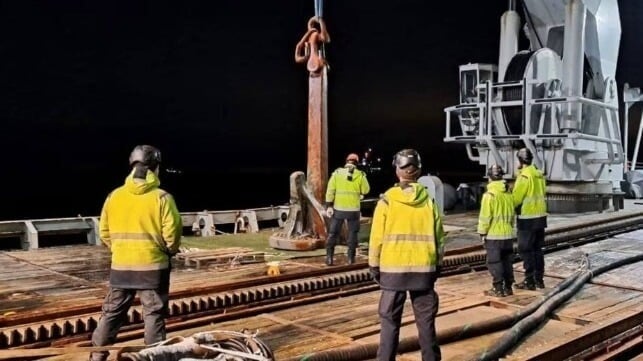Report: U.S. is Convinced That Baltic Cable Damage Was Accidental

Since late December, the Russia-linked tanker Eagle S has been under arrest in Finland on suspicion of rupturing five subsea cables by dragging her anchor for 50 miles. The Christmas Day incident was the latest in a series of three suspected sabotage attacks on the Baltic seabed, all involving vessels headed to or from Russia. According to The Washington Post, senior intelligence officials in the U.S. and the EU have become convinced that these repeat incidents were all accidents caused by inexperienced crewmembers, and had nothing to do with Russian "hybrid" warfare efforts.
The Post's report was received with skepticism by some in Finland. Pekka Toveri, former head of Finland's military intelligence agency, told the paper that the accidental-damage theory was "total B.S."
"The most important thing in any hybrid operation is deniability," Toveri said, explaining how the incidents might have an accidental appearance. He pointed to the ships' anomalous movements and the well-funded, decadal Russian intelligence effort to map out NATO's seabed infrastructure vulnerabilities.
Finnish National Bureau of Investigation inspector Sami Liimatainen, who is involved in the ongoing inquiry aboard Eagle S, gave a dismissive reply when asked about the Post's accidental-damage explanation. "I'm not even going to comment on that, I'll leave the information from foreign newspapers at their own value. The Finnish National Police is investigating the crime," Liimatainen told YLE. "Crimes are being investigated and solved. Nothing has changed."
Eagle S's lost port anchor was recovered from the bottom of the Baltic at the end of a 50-mile drag track, at the location where the ship was intercepted by Finnish forces. In order to start the drag track by accident, the Eagle S would have to lower and then secure her port anchor accidentally mid-voyage, without the crew's knowledge, and without the anchor running away. Then, over the course of a 50-mile transit, the crew would have to overlook the effects of the port anchor dragging on the bottom at 6-10 knots.
Sweden warns of Russian, Chinese and Iranian hybrid warfare
Sweden - which was affected by two of the subsea cable damage incidents - has publicly acknowledged an ongoing state of hybrid warfare with Russia, characterized in part by covert threats in the subsea domain.
"Hybrid warfare is not a kinder form of war. The aim is to harm or weaken us and our society - and NATO - through actions that are deniable and more difficult to derive and respond to. This can be done through measures that sabotage and destroy important societal functions, make decision-making more difficult or damage trust in the country's authorities and leadership," said Swedish Commander-in-Chief Michael Claesson.
Claesson's ministry singled out Russia, China and Iran as active antagonists in this shadow conflict, and said that sabotage attacks (including targets in the power grid and telecommunication system) are among their methods. These attacks are planned by intelligence agencies, but are often carried out by hired hands in order to maintain deniability, the ministry said.
"Sweden is not at war. But there is no peace either," said Swedish Prime Minister Ulf Kristersson. "True peace requires freedom and the absence of serious conflicts between countries. But we and our neighbors are exposed to hybrid attacks, carried out not with robots and soldiers, but with computers, money, disinformation and the risk of sabotage."
